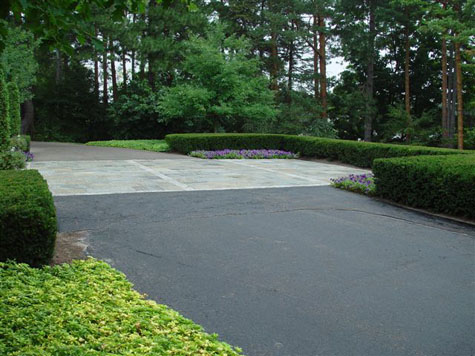
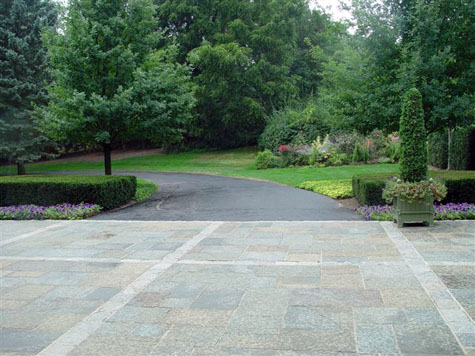
For good or for ill, we Americans do love our cars, our garages, and our driveways. We site our mailboxes so we can drive up to them. Many of us own homes that present the garage as the prime architectural feature. If you are in the fortunate position of being able to choose a driveway, I could make these suggestions.
 Consult a landscape architect or landscape designer about the drive; be clear about your needs. Do you entertain frequently, and need extra parking? Do your kids need a place to shoot hoops, and skateboard? A driveway that doesn’t work well for you can be an irritation you have to visit every day. Once the plan for the drive addresses your needs, then you are ready to plan for a beautiful driveway.
Consult a landscape architect or landscape designer about the drive; be clear about your needs. Do you entertain frequently, and need extra parking? Do your kids need a place to shoot hoops, and skateboard? A driveway that doesn’t work well for you can be an irritation you have to visit every day. Once the plan for the drive addresses your needs, then you are ready to plan for a beautiful driveway.
[Read more…]
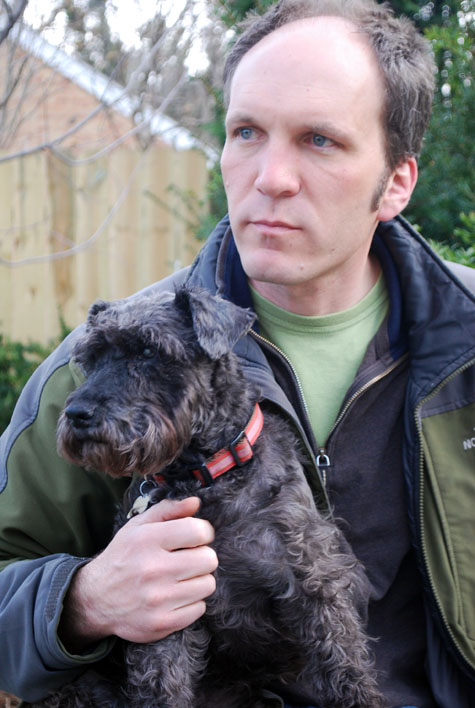 Anyone who has come to Detroit Garden Works the past 15 years has probably dealt with Rob. He manages, buys, designs, arranges, and generally oversees the store. He does display, he pulls weeds, and waters. He arranges purchases from nurseries in Ohio, Tennessee, and Long Island, and every place in between. He buys for DGW all over the country, and in Europe. In recent years, he has made a concerted effort to shop our country. We two agree that every city, every region in our country, has people making beautiful work. We just need to find them. His latest purchase, custom made plant towers in a weather resistant acid washed finish that looks like lead. Many of them are his design, and they are being manufactured by a local ironworker.
Anyone who has come to Detroit Garden Works the past 15 years has probably dealt with Rob. He manages, buys, designs, arranges, and generally oversees the store. He does display, he pulls weeds, and waters. He arranges purchases from nurseries in Ohio, Tennessee, and Long Island, and every place in between. He buys for DGW all over the country, and in Europe. In recent years, he has made a concerted effort to shop our country. We two agree that every city, every region in our country, has people making beautiful work. We just need to find them. His latest purchase, custom made plant towers in a weather resistant acid washed finish that looks like lead. Many of them are his design, and they are being manufactured by a local ironworker.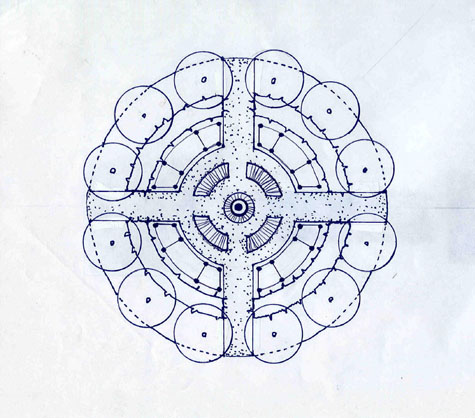 Tools are useful. This does not mean they are precious. My landscape plans are a two-dimensional description of a sculpture which is to come. They are not an end in themselves. I go over them with my superintendent; we do a layout. That plan usually ends up in a lunchbox, a back pocket, or after it is irreparably wet and mud smeared, in the trash. They are a means by which to communicate.
Tools are useful. This does not mean they are precious. My landscape plans are a two-dimensional description of a sculpture which is to come. They are not an end in themselves. I go over them with my superintendent; we do a layout. That plan usually ends up in a lunchbox, a back pocket, or after it is irreparably wet and mud smeared, in the trash. They are a means by which to communicate.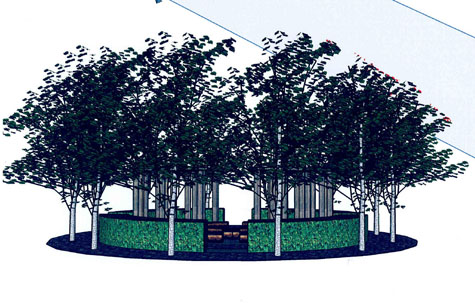 There are computer programs which help projects to get drawn quickly. I use them to draw very complicated structures. They are very useful in detailing changes to this and that-without having to redraw everything. But I am most interested in the evidence of the human hand. I draw by hand, as that drawing is part of a process which is distinctly my process. My clients find out that as I respect the evidence of my hand, I have the ability to respect theirs as well.
There are computer programs which help projects to get drawn quickly. I use them to draw very complicated structures. They are very useful in detailing changes to this and that-without having to redraw everything. But I am most interested in the evidence of the human hand. I draw by hand, as that drawing is part of a process which is distinctly my process. My clients find out that as I respect the evidence of my hand, I have the ability to respect theirs as well.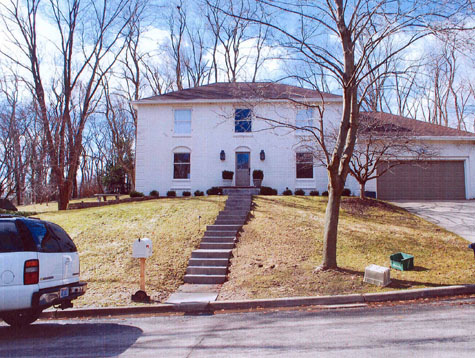
 As important a tool as geometry is my Nikon D-60 digital camera. I could not overestimate the impact this tool has had on my design work. I take endless panoramic pictures of projects. The house, the land, the placement of trees, the views out the windows-I take many more pictures than what I could possibly need, as they are as easy to get rid of as they are to keep. The camera is a single-eyed machine. The printed pictures come with edges; what I photograph is a composition. It records what we have become accustomed to, and don’t see anymore-like the trash cans on the terrace.
As important a tool as geometry is my Nikon D-60 digital camera. I could not overestimate the impact this tool has had on my design work. I take endless panoramic pictures of projects. The house, the land, the placement of trees, the views out the windows-I take many more pictures than what I could possibly need, as they are as easy to get rid of as they are to keep. The camera is a single-eyed machine. The printed pictures come with edges; what I photograph is a composition. It records what we have become accustomed to, and don’t see anymore-like the trash cans on the terrace.